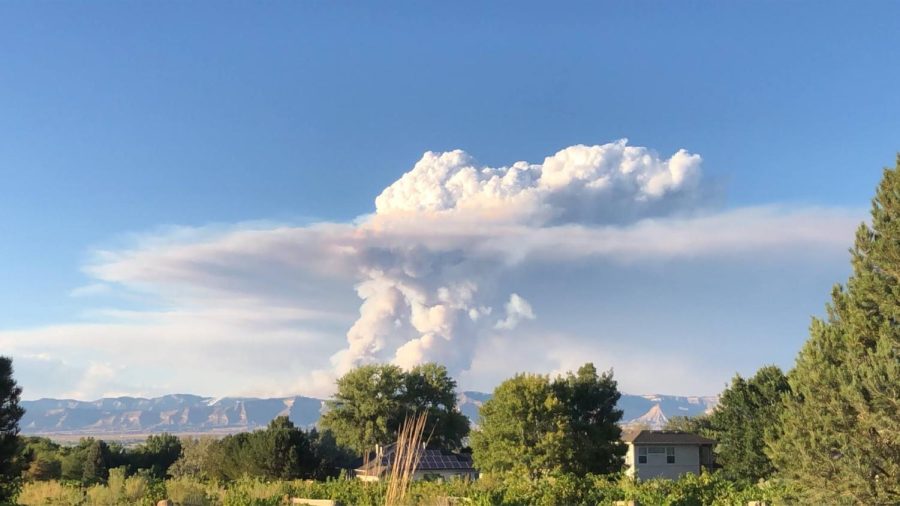Are We in For More Fires This Year?
April 22, 2022
In the past several years, the Grand Valley has experienced the effects of the stronger and stronger wildfires that have been raging in the American West. For the past few summers, smoky, orange-tinted, and ashen skies were not an uncommon sight in our area. The National Interagency Fire Center (NIFC) estimates that, last year, Colorado wildfires burned 42,202 acres, and they burned 665,454 acres in 2020; amounting to almost $800 million in damage in both years combined. All of this raises the question: can we expect to experience such severe wildfires in 2022?
At first glance, it seems the answer to that question may be yes. According to the NIFC, Colorado and 90% of the West at-large continues to experience a years-long drought. Higher temperatures and lower precipitation, even throughout the winter, has caused a reduction in snowpack and an increase in aridness that will make vegetation more prone to conflagration. Already, smaller wildfires experienced since the beginning of 2022 have burned 20% more acres than the decade average. However, most of this has occurred in the incredibly arid Southwest which, as the NIFC reports, “is not unusual through March.”
While many wildfires in 2022 may not occur in Colorado or the Grand Valley itself, these greater Western area wildfires can have a significant impact on our area. During California’s record 2020 wildfire season, prevailing winds carried smoke from the fires to western Colorado. IQ Air, a weather agency that monitors Air Quality Index, reported that in Grand Junction “the worst months for air quality were August and September when “Moderate” quality air was recorded with respective figures of 19.8 and 12.5 µg/m³.”
Senior Jadyn Heil recalls the difficulty of this time: “It was always really smoky and orange outside and when I had cross country practice: it would burn my lungs when I ran. Really, it was hard to do any outdoor activities.”
Of course, fires that actually occur in western Colorado could exacerbate this problem, not to mention the land, property, and lives that could be lost if wildfires hit our area. Unfortunately, this is a possibility in 2022: the NIFC reports that “Most of the Southwest is forecast to have above normal significant fire potential in May and June, with potential increasing across southern and western Colorado and southern portions of the Great Basin.”
Senior Tessa Reimer gives insight into the impact a more local fire could have. Her family owns a cabin in Eagle County and she recalls that, during the Sylvan fire in June 2021, “a lot of neighborhoods near us had to be evacuated. Luckily, my family was safe, but it was really frightening.”
Fires in the Rocky Mountains have spillover effects as well. In 2021, record mudslides in the Glenwood Canyon occurred after fires cleared much of the vegetation and tree cover off of the mountains. These mudslides shut down I-70, which majorly disrupted travel and commerce.
It is important to note that much of the recent severity of drought in the West–and therefore much of the severity of wildfires–can be attributed to rising temperatures globally. The gravity of recent fire seasons, and possibly this one, is not an anomaly, but part of the larger climate crisis. As we work towards finding solutions to this problem, wildfires are still going to occur. Until this manifests, the best thing those of us in high-risk areas can do is stay prepared and try to stay safe.

